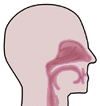


Biography
 Dr.
Robert I. Henkin is a native Californian, born and raised in Los Angeles.
He graduated from the University of Southern California in 1951 with a major
in music. After graduation he worked in Hollywood as a composer of music
for major motion pictures, radio programs and theatre productions. He continued
his education at the University of California at Los Angeles (UCLA) where
he was a teaching assistant in the Department of Music and obtained his
PhD while continuing his role as a Hollywood composer.
Dr.
Robert I. Henkin is a native Californian, born and raised in Los Angeles.
He graduated from the University of Southern California in 1951 with a major
in music. After graduation he worked in Hollywood as a composer of music
for major motion pictures, radio programs and theatre productions. He continued
his education at the University of California at Los Angeles (UCLA) where
he was a teaching assistant in the Department of Music and obtained his
PhD while continuing his role as a Hollywood composer.
His interests
soon expanded to include concepts of how music affected emotional responses,
and the role the structure of music played in achieving specific emotional
responses. During this period he worked in the fields of mathematics,
physics, experimental psychology, and physiology. This work culminated
in the first successful attempt to define mathematically those factors
in music that can be used to achieve specific human responses, and to
correlate these factors with specific physiological responses.
These studies led him to attend the medical school at UCLA, from which
he was graduated in 1959. During this period Dr. Henkin continued his
work in both professional composition of music for various films and theatrical
productions and in scientific studies of the roles of sound, hearing and
music in human physiology and behavior. He also became interested at this
period in the relationship between hormones and the roles they played
in controlling sensory process including not only hearing but also taste,
smell and vision.
He extended the work of Curt Richter in animals to humans and demonstrated
the specific role of adrenal cortical hormones as a controlling factor
in taste and smell acuity. After completing an internship in medicine
at the UCLA Medical Center in 1960 he undertook a residency in medicine
and neurology at The University of Miami's Jackson Memorial Hospital in
Miami, Florida, which he completed in 1961.
He then went to Laboratory of Clinical Science of The National Institutes
of Mental Health/National Institute of Neurological Diseases as a Research
Associate, a program in which a small elite group of leading candidates
from the US were chosen to participate in a dedicated research program
sponsored by the National Institutes of Health. At termination of this
program in 1963 he continued at the NIH as a Senior Investigator in the
Clinical Endocrinology Branch of the NIH, headed by Dr. Frederic Bartter,
one the world's foremost endocrinologists.
Because of his interests in taste and smell physiology he consulted in
various institutes of the NIH and became the primary instructor in taste
and smell anatomy, physiology and pathology at the Washington, D.C. Armed
Forces Institute of Pathology's (AFIP) course in basic science for residents
in the field of Otolaryngology. These lectures expanded into a full course
in which basic aspects of taste and smell were discussed.
During this period, because of the unique clinical material available
at the NIH, he was able to define the first systematic approach to the
clinical classification of taste and smell pathology, defined the basic
types of taste and smell loss, defined the pathology in patients without
taste buds and described characteristics of taste abnormalities in patients
with Type I and Type II familial dysautonomia.
He also was the first to describe taste and smell abnormalities and pathological
characteristics in patients with a wide variety of disorders including
adrenal cortical insufficiency, hypothyroidism, pseudohypoparathyroidism,
Turner's syndrome, hypopituitarism, Cushing's syndrome, Refsum's disease,
abetalipoproteinemia, following laryngectomy, in Sjogren's syndrome and
in many other abnormalities.
Soon after, he began the first clinical program ever established devoted
to the study of patients with taste and smell dysfunction. Patients from
all over the world with various dysfunctions of taste and smell came to
the NIH for study of these problems. He catalogued patient symptoms and
he began the first treatment program in patients with taste and smell
dysfunction.
In 1968, the first clinic devoted to the study and treatment of patients
with taste and smell dysfunction was established at the NIH. As a result
of this work the first patients with taste and smell dysfunction related
to altered zinc metabolism were successfully treated and regained their
normal function. This work has been the subject of many scientific publications
in US and abroad. It also formed the basis of an Annals of Medicine article
published in 1977 by Breton Roche in The New Yorker Magazine.
As a result of this work the role of saliva in maintenance
of oral cavity health, including taste function, was established. This
was accomplished through performance of the first total fractionation
and isolation of the major proteins in saliva. This isolation included
characterization of the first taste bud growth factor ever discovered
which Dr. Henkin named gustin. It was later determined that this growth
factor was a zinc containing metalloprotein called carbonic anhydrase
(CA) VI which acts on stem cells in taste buds to grow and develop the
entire repertoire of cells in the taste bud in a manner similar to the
role nerve growth factor (NGF) plays in sympathetic ganglion cells. He
discovered that without CAVI the cellular structures of taste buds wither
through a process called apoptosis whereas with CAVI cells of the taste
buds develop normally. In many patients who lost their taste acuity through
various disease processes CAVI synthesis was inhibited; giving these patients
zinc stimulated the gene for CAVI, increased CAVI secretion and restored
normal taste acuity.
In 1975 the program at NIH moved to the Georgetown University Medical
Center. Dr. Henkin became professor of neurology and pediatrics and established
The Center for Molecular Nutrition and Sensory Disorders of which the
newly established Taste and Smell Clinic of Washington, DC was the clinical
arm. As part of this program the first systematic studies of human zinc
metabolism were completed and the first compartmental model of human zinc
metabolism was established with funding assistance from the NIH. The roles
of fiber and aging in human zinc metabolism were also defined. At this
time the first systematic studies of human smell dysfunction were undertaken.
Smell dysfunction was discovered to be associated with many diseases including
sarcoidosis, allergic rhinitis and following surgical removal of the temporal
lobe of the brain as treatment for epilepsy. Drugs to treat smell loss
in these diseases were discovered and their use corrected losses in some
of these patients.
In 1986 The Center and The Clinic moved to the private sector while Dr.
Henkin continued research at both NIH and the Georgetown University Medical
Center. Beginning at this time functional magnetic resonance imaging (fMRI)
was used to define smell function on a completely objective basis. The
role of nasal mucus in maintenance of nasal cavity health including smell
function was established. This was accomplished through performance of
the first total fractionation and isolation of the major proteins in nasal
mucus. This isolation included the discovery of CAVI in nasal mucus and
its role as a growth factor in growth and development of cells in the
olfactory epithelium. The role of adenylyl cyclase as a growth factor
which acted on stem cells in the olfactory epithelium similar to CAVI
action in both taste buds and olfactory epithelium was also discovered.
The role of theophylline in the treatment of loss of smell acuity through
its action on cAMP was discovered. Studies of taste and smell distortions
were undertaken with discovery that gamma aminobutyric acid (GABA), the
endogenous brain inhibitory neurotransmitter, played a key role in controlling
taste and smell distortions and that drugs which enhanced GABA function
inhibited these distortions. These studies led to discovery of the role
brain plasticity and dysplasticity played in initiating symptoms of both
taste and smell distortions and oral and nasal burning and to discovery
of drugs which inhibited these sensations. The relationships between taste
and smell distortion, sensory auras and seizure disorders (epilepsy) were
discovered and new drugs and procedures were developed to treat some of
these problems.
In 2014, the commercial entity, Cyrano Therapeutics, was established with the specific goal of developing clinical programs in the United States and China for the treatment of patients with smell and taste dysfunction.
Home
| The Clinic | Diagnosis
| Treatment | FAQ
| Press
Research
| Clinical Overview
| What's New | Contact
Us
The descriptions
on this site are for informational purposes only and are not intended to substitute
for professional medical diagnosis and/or treatment.
If you have further questions, please contact the Taste
and Smell Clinic directly.
All material at this domain copyright © 2000-2022 the Taste and Smell Clinic.